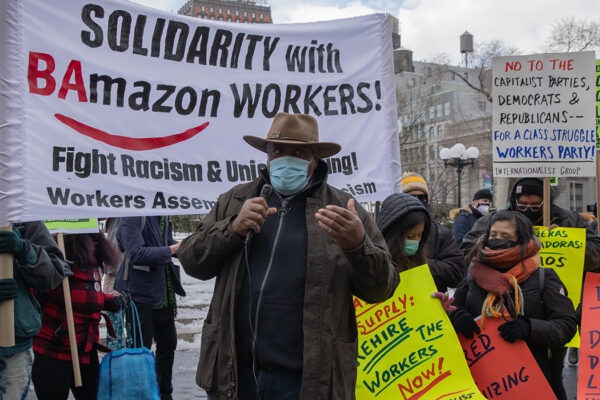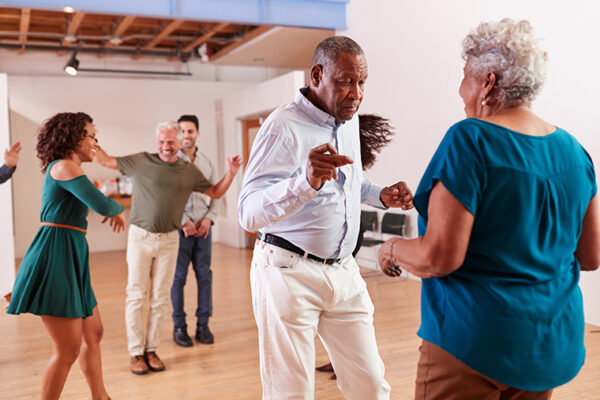In 1968, President Lyndon B. Johnson signed the Fair Housing Act, which prohibits discrimination based on race, religion, sex and nation of origin in the sale, rental or financing of housing. More than 50 years later, however, discrimination in the housing market not only exists, but is getting worse.

That is a key finding of a new report, “Appraised: The persistent evaluation of white neighborhoods as more valuable than communities of color homes,” released Nov. 2 by Elizabeth Korver-Glenn, assistant professor of sociology in Arts & Sciences at Washington University in St. Louis, and Junia Howell, visiting assistant professor of sociology at the University of Illinois Chicago.
Using the newly released Uniform Appraisal Dataset — the most comprehensive set of market appraisals in the nation — Howell and Korver-Glenn find that homes today in white neighborhoods are appraised at double the value of comparable homes in communities of color. This represents a 75% increase in neighborhood racial inequality in home values over the last decade.
“Although the racial inequality in home values has been increasing since 1980, the rate by which it is increasing has tripled in the last decade,” Howell and Korver-Glenn write in the report. “From 1980 to 2015, the neighborhood racial gap in appraisals expanded by $6,000 a year. Yet, in this last decade, this gap grew by $18,000 a year.”
COVID-19 pandemic worsened inequality
In the report, Howell and Korver-Glenn reveal that the unprecedented rise in home values during the COVID-19 pandemic further exacerbated racial inequality in appraised home values. Over the last two years, the average home in white neighborhoods increased in value $136,000, which is more than twice the appreciation a comparable house in a community of color experienced ($60,000), they write.

The difference was even more dramatic in the hottest markets — including Austin, Texas, Boston, Colorado Springs, Colo., Miami, San Diego and Seattle — where racial inequality in appraised values increased by $91,000, or 43%. According to the authors, this increase in inequality is nearly three times greater than the increase in racial inequity in stable housing markets like St. Louis.
“Nearly half of the growth of inequality observed over the decade occurred during the pandemic,” Howell said. “Our study shows that industry and monetary policy decisions made during the pandemic enabled an influx of capital into the housing market, primarily in white neighborhoods. This substantial increase in inequality will have ripple effects on racial inequities in wealth and well-being for years to come.”
Unequal harm among communities of color
Finally, Howell and Korver-Glenn examined differences in appraisal inequality across various communities of color. Their results show the difference between white neighborhoods and communities of color is particularly stark for American Indian, Alaska Native, Southeast Asian and Pacific Islander communities. In 2021, homes in white neighborhoods were appraised over three times more valuable than comparable homes in similar American Indian and Alaska Native neighborhoods located within the same metropolitan area, the authors said. Likewise, homes in white neighborhoods were appraised as three times more valuable than comparable homes in otherwise similar Southeast Asian and Pacific Islander communities.
With the release of this report, we hope to put an end to any doubts about the continuation of racism in the housing industry and point the way forward for regulators and industry leaders who are committed to changing the methods of appraisal that created this problem.
Elizabeth Korver-Glenn
“With the release of this report, we hope to put an end to any doubts about the continuation of racism in the housing industry and point the way forward for regulators and industry leaders who are committed to changing the methods of appraisal that created this problem,” said Korver-Glenn, author of the book “Race Brokers: Housing Markets and Segregation in 21st century Urban America.”
Appraisal practices rooted in racist beliefs
In the United States, purchasing or refinancing property with a mortgage loan requires a professional appraisal, which is intended to minimize the lender’s potential losses. Appraisers compare information about the home — size, bedrooms, bathrooms, etc., — and the neighborhood to comparable homes to determine their opinion of the home’s value. Appraisers also look to previous sale prices, making it more difficult to correct previous injustices. The appraised value determines the maximum loan amount.
While fair housing laws made it illegal to include explicitly racist criteria on appraisal forms, the same methods and logic still inform practices today. Previous research by Korver-Glenn found criteria like “neighborhood demographics,” “economics” and “appeal” function as stand-ins for the older explicitly racist notions of desirability and risk. And these appraisal standards are perfectly legal.
“Appraisal discrimination is not just a story about individual racist appraisers, but rather a story about the racism that underpins the appraisal industry and housing market as a whole,” Korver-Glenn explained.
The Uniform Appraisal Dataset provides researchers and policymakers an unprecedented opportunity to examine up-to-date data provided directly from licensed appraisers. Altogether, the dataset includes 47.3 million market appraisals conducted between 2013 and the second quarter of 2022 on single-family properties. The database was commissioned by President Joe Biden’s Interagency Task Force on Property Appraisal and Valuation Equity (PAVE).
To evaluate the data, Howell and Korver-Glenn used statistical modeling to compare communities with comparable housing stock, socioeconomic status and local amenities. They used census tracts as a proxy for neighborhoods and ran separate models for each housing market.
For the purpose of this study, they only included metropolitan areas with a total population greater than 500,000 and at least 50,000 residents of color. According to Korver-Glenn and Howell, this helped them ensure their estimates of racial inequality are robust and not due to the abnormalities of a single house or neighborhood.
“These findings are extraordinary, and a very strong indictment of the appraisal industry and the ways that it has not only maintained but increased neighborhood inequality in home values through the use of fundamentally racist practices and policies that continue to equate value with race,” Korver-Glenn said.
“Racial inequality in home values directly contributes to the persistent racial wealth gaps and residential segregation, which in turn influences racial inequalities in health, income and educational outcomes,” Howell added.
As the newly release data shows, racial inequality in home values not only exists, but is worse today than it was 40 years ago. Overhauling appraisal practices will be an important first step, but Howell and Korver-Glenn also argue that it is time to have a serious conversation about reparations.
“Given the cumulative harm caused by these federally sanctioned practices, we believe reparations are necessary to rectify past and present injustices,” Korver-Glenn said.
Howell and Korver-Glenn’s report was supported by WashU’s Weidenbaum Center on the Economy, Government and Public Policy and eruka, a nonprofit housing and finance organization. The full report can be downloaded here.


